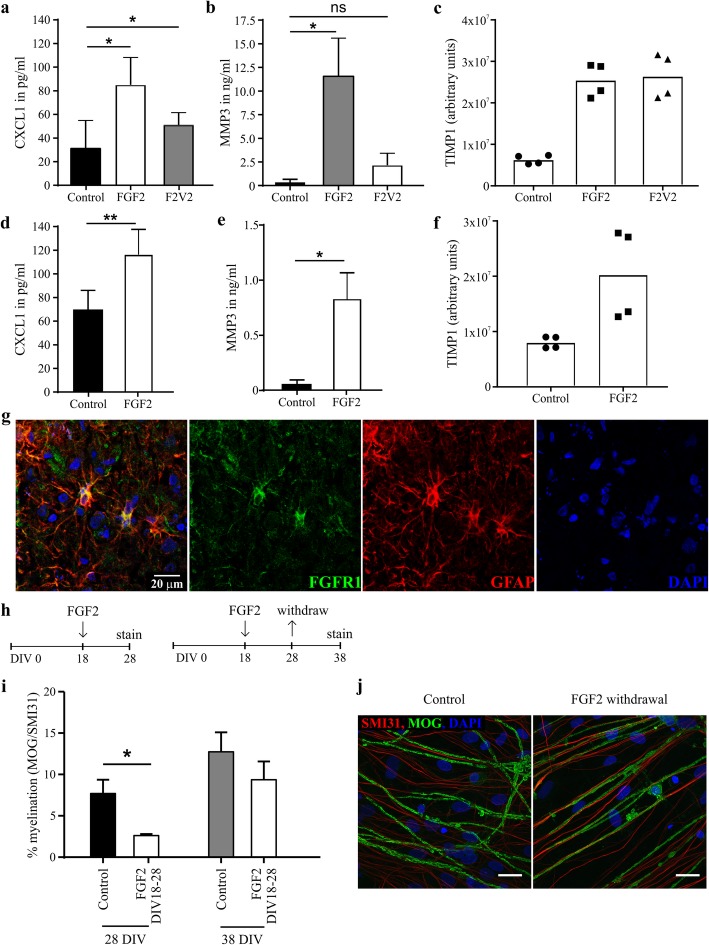Fig. 4.
FGFR1 supports induction of pro-myelinating and neuroprotective factors. Mouse myelinating cultures were treated with 100 ng/ml FGF2 or F2 V2 at DIV18 for 3 days and protein levels in the cell culture supernatant were analyzed by ELISA for CXCL1 (a) and TIMP1 (b) or by Proteom Profiler (c, Mouse Cytokine Array Panel a). a, b FGF2 treatment results in a significant increase in protein levels for both CXCL1 and MMP3 (p < 0.05), whereas F2 V2 only significantly increased the levels of CXCL1. Data are presented as means + SEM from 6 independent experiments; * p < 0.05. c TIMP1 levels are increased in both FGF2 and F2 V2 treated cultures; data are presented as technical duplicates from 2 independent experiments, pixel densities are represented as arbitrary units. d-f A monolayer of neurosphere-derived mouse astrocytes was treated with 100 ng/ml recombinant FGF2 for 3 days and concentrations of CXCL1 (d), MMP3 (e) or TIMP1 (f) were determined by ELISA (d, e) or Proteom Profiler (f, Mouse Cytokine Array Panel a). d, e Data are presented as means ± SEM from 4 independent experiments; * p < 0.05; ** p < 0.01 (paired t-test), f Data are presented as technical duplicates from 2 independent experiments, arbitrary units represent pixel densities. g FGFR1 expression co-localizes with GFAP+ astrocytes in active multiple sclerosis. h, i Myelinating CNS cultures were treated in the absence or presence of 100 ng/ml FGF2 for 10 days from DIV 18 onwards and either directly fixed and stained for MOG / SMI31 after a total of 28 days (28 DIV) or after 38 days in vitro (38 DIV); shown are mean + SEM from at least 4 independent experiments and p-values for paired t-test; * p < 0.05. j Representative confocal immunofluorescence images (63x magnification, Maximum Intensity Projection) of 38 DIV culture demonstrating withdrawal of FGF2 (18 DIV – 28 DIV) is followed by rapid remyelination resulting in the formation of myelinated internodes that are indistinguishable from those in untreated cultures. Scale bars represent 10 μm

